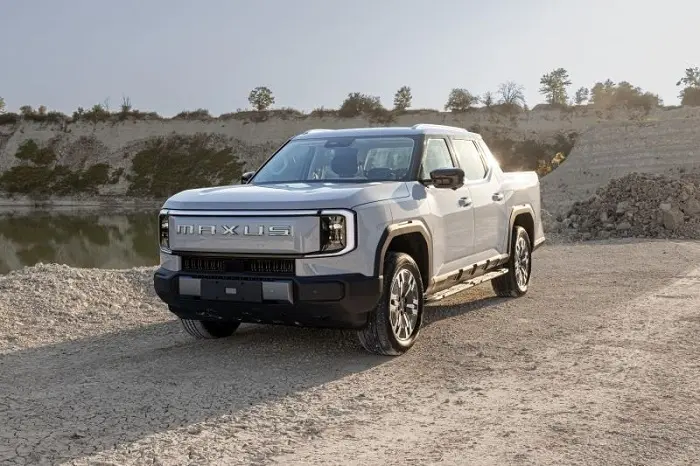LDV Australia has officially confirmed that the eTerron 9 will be its next electric ute, set to replace the less popular eT60. The eTerron 9 is expected to arrive in local showrooms in early 2025, with reports indicating a launch between January and March. The ute has also appeared in Australian Government approval documents, signaling its imminent arrival.
Known as the Maxus eTerron 9 in Europe, this will be LDV’s second electric utility vehicle in Australia. The previous model, the eT60, was a slightly modified version of the turbo-diesel dual-cab, but it carried a much higher starting price of $92,990 before on-road costs. Sales of the eT60 were limited, with around 100 units sold primarily to fleets aiming for zero tailpipe emissions.
The eTerron 9 aims to attract more private buyers. It will offer both single-motor rear-wheel drive and dual-motor four-wheel drive options, generating 200 kW and 325 kW respectively. This is a significant increase compared to the eT60’s 130 kW rear-drive model. Notably, the dual-motor variant can accelerate from 0 to 100 km/h in just 5.8 seconds.
Powering the eTerron 9 is a 102 kWh lithium iron phosphate (LFP) battery pack, which boasts a claimed driving range of up to 430 km according to the WLTP test cycle. In comparison, the eT60’s 88.5 kWh lithium-ion battery offered a range of 330 km in lab tests.
Charging capabilities are also enhanced, with the eTerron 9 supporting charging speeds of up to 115 kW. Additionally, it features vehicle-to-load (V2L) capability, allowing users to power external appliances through multiple 2.2 kW sockets and a 6.6 kW external connection.
Safety is a priority, with Maxus claiming the eTerron 9’s “semi-monocoque body” and “submarine-grade ultra-high-strength” steel meet Euro NCAP’s standards for a five-star rating, although it has yet to be tested by ANCAP.
The vehicle is equipped with multi-link rear suspension and standard air suspension, which can lower the loading area by 60 mm in Easy Load mode. It offers six driving modes, including a customizable option for adjusting air suspension height and other performance settings.
While the payload capacity has decreased from the eT60’s 1,000 kg to between 650 kg and 750 kg, the eTerron 9 can tow up to 3,500 kg, a significant upgrade from its predecessor’s limit of 1,000 kg.
Measuring 5,500 mm in length, 1,997 mm in width, and 1,860 mm in height, the eTerron 9 has a wheelbase of 3,300 mm and a gross vehicle mass (GVM) of 3,500 kg. Practical features include a 236-liter “frunk” and an electric tailgate that separates the cabin from the tub, creating a loading area of up to 2.4 meters long.
Two variants are expected to be available in Australia, equipped with either 18- or 20-inch wheels. Inside, the eTerron 9 features leather upholstery, an eight-way power-adjustable driver’s seat with ventilation and massage functions, and foldable front seats that create an almost flat sleeping area of 170 cm in length.
Additionally, government documents have revealed that a turbo-diesel variant, named the Terron 9, has also been approved for Australia, featuring a 165 kW 2.5-liter four-cylinder engine.
Related topics:

